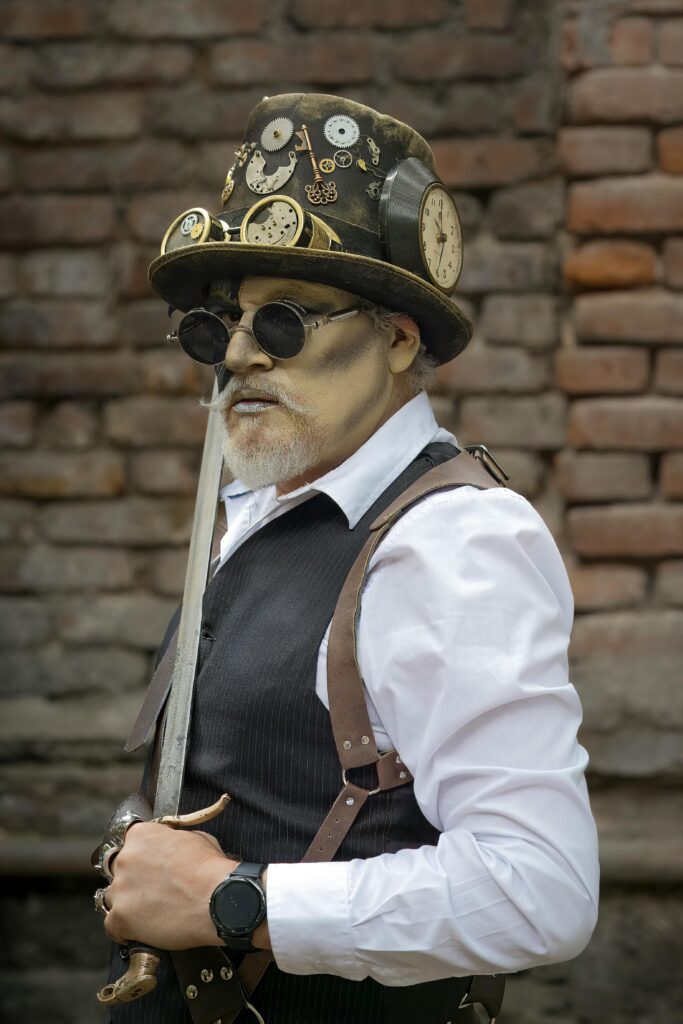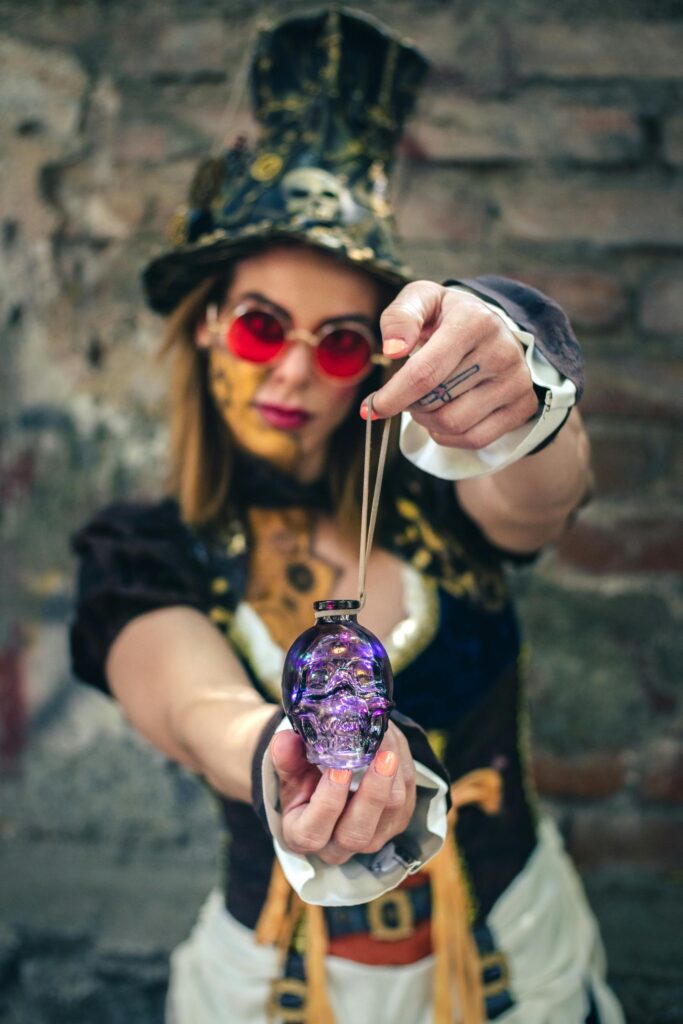Hello there! If you’re intrigued by the intricate and fantastical world of steampunk mechanical artwork, then you’ve come to the right place. In this article, we will explore some helpful tips to guide you in creating your own stunning pieces that embody the essence of this unique and creative genre. From incorporating vintage elements to mastering intricate details, these tips will surely inspire you to dive into the world of steampunk design with confidence and creativity. Have you ever been captivated by the intricate and fascinating world of steampunk art? If you have always been intrigued by the mixture of Victorian aesthetics and industrial elements, you may have considered creating your own steampunk mechanical artwork. But where do you start? In this article, we will provide you with valuable tips and guidelines on how to design your own stunning steampunk mechanical pieces. So grab your goggles and gears, it’s time to dive into the world of steampunk art!
Understanding Steampunk Aesthetics
Let’s start by exploring the foundational elements of steampunk aesthetics. Steampunk is a subgenre of science fiction that incorporates elements of 19th-century industrial machinery and technology. This fusion of vintage design and futuristic concepts creates a unique and visually striking style that is instantly recognizable.
When designing steampunk mechanical artwork, it is essential to incorporate key elements such as exposed gears, rivets, brass accents, and Victorian-inspired motifs. By understanding and embracing these core aesthetics, you can create pieces that are authentic and visually appealing.
Steampunk Color Palette
The color palette of steampunk art plays a crucial role in capturing the essence of this genre. Earthy tones such as brown, copper, brass, gold, and rusty red are commonly used to evoke a sense of industrial grunge and vintage elegance. These colors work harmoniously together to create a rich and textured look that is characteristic of steampunk design.
When selecting colors for your steampunk mechanical artwork, experiment with different shades and combinations to achieve a cohesive and visually striking result. Remember to incorporate metallic accents and weathered finishes to add depth and authenticity to your pieces.
Materials and Tools
One of the most exciting aspects of creating steampunk mechanical artwork is the opportunity to work with a variety of materials and tools. From metal gears and clock parts to leather straps and antique findings, the possibilities are endless when it comes to crafting unique and intricate pieces.
Materials for Steampunk Artwork
When sourcing materials for your steampunk projects, consider exploring antique shops, flea markets, and online retailers to find vintage items that can be repurposed into your artwork. Brass sheets, copper tubing, old watch parts, and industrial nuts and bolts are popular choices for creating steampunk elements.
Additionally, leather scraps, glass vials, and clock mechanisms can be used to add layers of complexity and detail to your pieces. By combining these materials in innovative ways, you can bring your steampunk visions to life with authenticity and flair.
Tools for Steampunk Artwork
To bring your steampunk mechanical artwork to fruition, you will need a variety of tools to manipulate and assemble your materials. Basic tools such as pliers, wire cutters, and a good quality glue gun are essential for basic construction and assembly tasks.
For more intricate work, consider investing in specialty tools such as a jeweler’s saw, metal file, and soldering iron to create precise cuts and connections. These tools will allow you to work with greater precision and detail, enabling you to achieve professional results in your steampunk creations.

Design Principles
Incorporating fundamental design principles into your steampunk mechanical artwork is essential for creating pieces that are visually impactful and cohesive. By understanding concepts such as balance, symmetry, and focal points, you can elevate your designs and make them more visually appealing.
Balance and Symmetry
Balance is a critical design principle that involves distributing visual elements evenly throughout your composition to create a sense of harmony and stability. In steampunk art, balance can be achieved by arranging gears, cogs, and other mechanical components in a symmetrical or asymmetrical manner to create visual interest and cohesion.
Symmetry, on the other hand, involves mirroring elements on either side of a central axis to create a sense of order and structure. By incorporating symmetrical elements such as matching gears or identical motifs, you can create a sense of balance and cohesion in your steampunk mechanical artwork.
Focal Points
Focal points are key elements in a composition that draw the viewer’s attention and create visual interest. In steampunk art, focal points can be created by highlighting a central gear, embellishing a specific area with intricate detailing, or incorporating unique textures and finishes to attract the eye.
When designing your steampunk mechanical artwork, consider incorporating focal points strategically to guide the viewer’s gaze and create a visual hierarchy within your composition. By emphasizing key elements and creating focal points, you can enhance the overall impact and appeal of your steampunk pieces.
Creating Steampunk Characters
Steampunk art is not limited to mechanical devices and gadgets; it also extends to the realm of character design. By combining Victorian fashion, industrial accessories, and futuristic elements, you can create unique and captivating steampunk characters that are full of personality and charm.
Character Design Elements
When designing steampunk characters, consider incorporating elements such as corsets, top hats, goggles, and lace-up boots to evoke a sense of Victorian elegance and sophistication. Add mechanical accessories such as gears, goggles, and prosthetic limbs to infuse your characters with an industrial aesthetic and a futuristic flair.
Experiment with different combinations of clothing, accessories, and gadgets to create characters that are dynamic and visually engaging. By blending historical references with imaginative concepts, you can craft steampunk characters that are as distinctive as they are captivating.
Character Backstories and Motivations
To bring your steampunk characters to life, consider developing detailed backstories and motivations that inform their personalities and actions. Explore themes of adventure, invention, and rebellion to create characters that are rich in depth and complexity.
Think about the world in which your characters inhabit, the challenges they face, and the goals they strive to achieve. By immersing yourself in your character’s world and crafting compelling narratives, you can infuse your steampunk artwork with a sense of storytelling and intrigue that will resonate with viewers.

Tips for Steampunk Rendering
Rendering is a crucial step in the design process that involves creating detailed and polished representations of your steampunk mechanical artwork. By mastering rendering techniques, you can effectively communicate your design ideas, showcase intricate details, and bring your creations to life in a visually compelling way.
Sketching and Conceptualization
Before rendering your steampunk artwork, start by sketching out your ideas and concepts to explore different compositions, layouts, and details. Use pencil and paper to capture your vision and refine your designs before moving on to digital rendering tools.
Experiment with different perspectives, angles, and lighting effects to bring depth and dimension to your sketches. By refining your concepts through sketching and conceptualization, you can create a solid foundation for your rendering process and ensure that your final artwork is cohesive and visually impactful.
Digital Rendering Techniques
For digital artists, rendering steampunk artwork can be achieved using software such as Adobe Photoshop, Illustrator, or Autodesk SketchBook. These tools offer a wide range of features and capabilities that enable artists to create detailed and realistic renderings of their designs.
When rendering your steampunk artwork digitally, consider incorporating textures, shading, and lighting effects to add depth and realism to your pieces. Experiment with different brushes, filters, and blending modes to enhance your artwork and make it more visually dynamic.
Finishing Touches
As you near the completion of your steampunk mechanical artwork, it’s essential to pay attention to the finishing touches to ensure that your pieces are polished and professional. Adding final details, weathering effects, and embellishments can elevate your artwork and give it a sense of authenticity and craftsmanship.
Weathering and Distressing
Weathering is a technique that involves adding aging effects to your steampunk artwork to create a sense of wear and tear. By using techniques such as dry brushing, rust effects, and grime washes, you can simulate the look of aged and weathered materials to enhance the realism of your pieces.
Distressing involves creating deliberate imperfections, scratches, and patina on your artwork to give it a sense of history and character. By distressing your steampunk pieces strategically, you can add depth and visual interest to your artwork and make it more captivating and engaging.
Embellishments and Details
Embellishments such as filigree, engravings, and ornate accents can enhance the beauty and complexity of your steampunk artwork. Consider adding intricate details such as clock faces, Victorian patterns, and industrial motifs to bring depth and elegance to your pieces.
Experiment with different embellishments and details to find the right balance and composition that complements your steampunk artwork. By adding final touches that are thoughtful and intentional, you can elevate your pieces and make them truly stand out as unique and extraordinary works of art.
In conclusion, designing steampunk mechanical artwork is a rewarding and creative endeavor that allows you to explore a unique fusion of vintage aesthetics and futuristic concepts. By incorporating key elements, materials, tools, design principles, character design, rendering techniques, and finishing touches, you can create stunning and captivating steampunk pieces that showcase your artistic skills and imagination. So, embrace your inner inventor and start designing your own steampunk masterpieces today!


